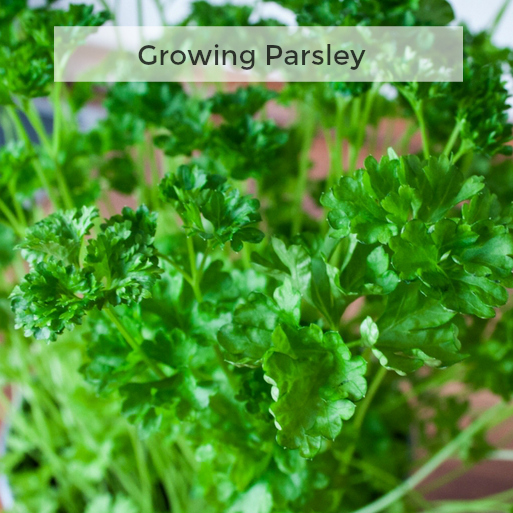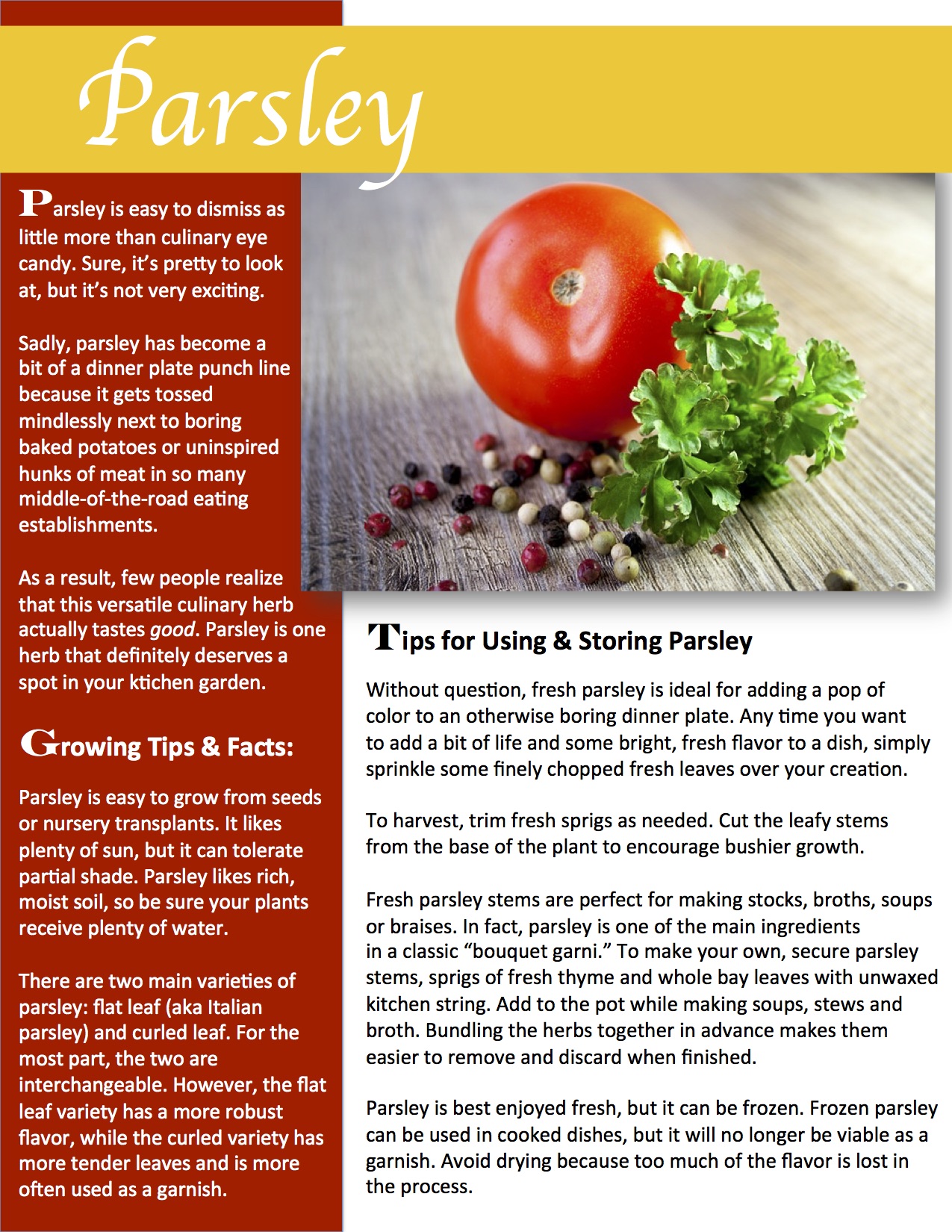
Parsley is easy to dismiss as little more than culinary eye candy. Sure, it’s pretty to look at, but it’s not very exciting. Sadly, parsley has become a bit of a dinner plate punch line because it gets tossed mindlessly next to boring baked potatoes or uninspired hunks of meat in so many middle-of-the-road eating establishments. As a result, few people realize that this versatile culinary herb actually tastes good.
Growing tips and facts
Parsley is easy to grow from seeds or nursery transplants. It likes plenty of sun, but it can tolerate partial shade.
Parsley likes rich, moist soil, so be sure your plants receive plenty of water.
There are two main varieties of parsley: flat leaf (aka Italian parsley) and curled leaf. For the most part, the two are interchangeable. However, the flat leaf variety has a more robust flavour, while the curled variety has more tender leaves and is more often used as a garnish.
Tips for using and preserving parsley
Without question, fresh parsley is ideal for adding a pop of colour to an otherwise boring dinner plate. Any time you want to add a bit of life and some bright, fresh flavour to a dish, simply sprinkle some finely chopped fresh leaves over your creation.
To harvest, trim fresh sprigs as needed. Cut the leafy stems from the base of the plant to encourage bushier growth.
Fresh parsley stems are perfect for making stocks, broths, soups or braises. In fact, parsley is one of the main ingredients in a classic “bouquet garni.” To make your own, secure parsley stems, sprigs of fresh thyme and whole bay leaves with unwaxed kitchen string. Add to the pot while making soups, stews and broth. Bundling the herbs together in advance makes them easier to remove and discard when finished.
Parsley is best enjoyed fresh, but it can be frozen. Frozen parsley can be used in cooked dishes, but it will no longer be viable as a garnish.
Avoid drying because too much of the flavor is lost in the process.


[…] of water before placing the stems in. This works well for herbs like basil, cilantro, oregano and parsley. This is a great method for basil in particular, because basil tends to turn black very quickly if […]